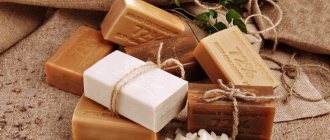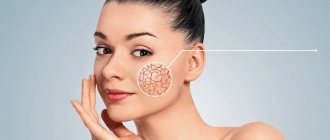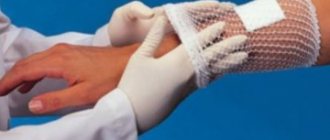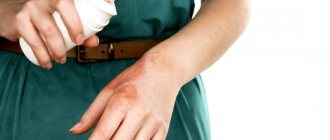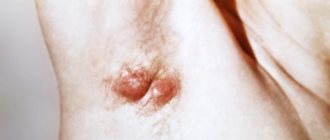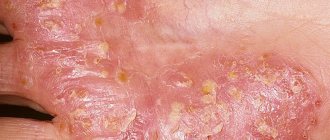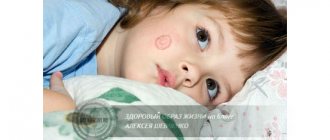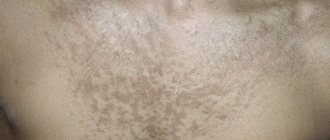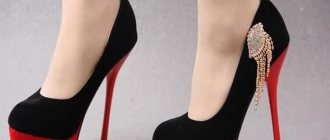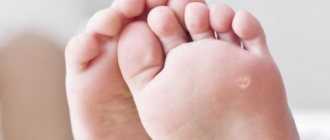Milia are small white or yellowish formations that can be localized over the entire surface of the skin. Milia most often appear on the face: eyelids, nose, cheekbones and forehead. Sometimes rashes appear on the genitals and chest. They appear in a person regardless of age - a white tubercle can be found on the skin of both an adult and a baby. It is difficult to remove them on your own, so in order to remove these unaesthetic points you often have to contact a specialist.
Milia are a non-cancerous formation on the skin that mostly causes only psychological discomfort.
What are milia?
Milia are also called millet, whiteheads, and retention cysts. These formations in the form of nodules protrude slightly above the surface of the skin. The reasons for the appearance of millet grass are still unknown to doctors. Presumably, their contents are carbonized particles of the epithelium, and they collect in a certain place and form milia due to the fact that the exfoliation processes in the skin are disrupted and slowed down. Externally, retention cysts are similar to closed comedones. The difference is that the contents of comedones are sebum, and milia are keratinized particles, sometimes with a small admixture of epidermal sebum. The similarity is that both milia and comedones lie in a deep layer of the skin and do not come out on their own.
Symptoms and photos of milia
This defect is often found among young children. However, it is more often found in adolescents and adults. These small dense subcutaneous formations, as seen in the photo, can be either single or grouped. The diameter of the millet reaches 0.5 – 3 mm.
If there are many formations, the dermis in the places where the rashes form becomes coarser, multiple grooves appear on it, separating individual groups of nodules. This defect can go away on its own, but more often they persist for many years.
There is an assumption that the appearance of milia is caused by blockage of the ducts of the sebaceous glands due to the accumulation of sebum in them. In fact, this description is more suitable not for grasses, but for comedones, most often located on the cheeks, shoulders, chest, in general, in places characteristic of acne.
Milia are located separately from the sebaceous and sweat glands and hair follicles. They consist of cystic networks lined with epithelial cells. The capsule of the cyst contains layered bulb-shaped keratin accumulations, and not the secretion of the sebaceous glands. Fat may be present in the cyst, but in minimal concentration.
Thus, a milia is an epidermal cyst (vesicle) in the surface layer of the skin containing keratin. Presumably, the formation of millet patches is caused by hyperkeratosis, characterized by accelerated cell division in the upper layer of the skin and a simultaneous slowdown in exfoliation processes. This is the explanation that it is impossible to remove milia using the same methods that are used to treat acne or acne.
data-ad-format="auto">
It is impossible to squeeze them out, even with strong pressure. In rare cases, when piercing formations, a small amount of white content with a soft consistency may be released.
Localization and why they appear
Whiteheads can appear all over the body, but are more likely to occur in areas where the skin is dry. They are divided into primary - milia appear unexpectedly and are symptomatic and go away on their own after a few months, and secondary - appear at the site where the epidermis was previously injured by inflammation, surgery or a strong blow. Small cysts can be single or located in groups. Most often the face suffers from rashes: cheeks, forehead, temples, eyelids, chin, but they can also appear on the arms, shoulders, legs, penis and chest. Women's skin is susceptible to the appearance of formations; in men they appear rarely and in small quantities. Milling occurs due to:
- metabolic disorders;
- hereditary predisposition;
- long exposure to sunlight;
- lack of vitamin A;
- hormonal imbalance;
- gastrointestinal diseases;
- endocrine diseases;
- diseases of the gonads;
- thyroid diseases;
- hobbies for alcohol;
- non-compliance with hygiene rules;
- incorrectly selected cosmetics.
Milia are a little like small pimples, but they cannot be “squeezed out” because they do not contain pus.
How to get rid of milia. Treatment options
If this disease appears for the first time, no therapeutic measures are necessary. Experts say that such formations will disappear on their own after some time.
If the rashes do not go away after several months, their number increases, and the dermis becomes inflamed and irritated, it is not recommended to delay a visit to a specialist.
As for secondary milia, they require more careful attention. After examination, the doctor will prescribe the use of medicinal ointments based on retinoids. Often, with secondary millet peeling, peeling is carried out using fruit acids.
A good therapeutic effect can be achieved by using cosmetic preparations with vitamins A and E to treat the disease. Such products help protect the skin from harmful external influences, improve its regenerative properties, and also gently restore problem areas.
Another treatment option for the disease is surgical removal of the formation. If such a procedure is carried out in a medical institution with sterility, no scars remain on the dermis after the removal of milia.
The following methods are often used to remove milia:
- curettage;
- electrocoagulation;
- laser removal.
Curettage is used for isolated rashes. First, the cyst is punctured and then squeezed out along with the capsule. The procedure is carried out using a special instrument - a curette.
As for electrocoagulation, it is the destruction or destruction of formations by cauterizing them with high-frequency electric current. This method of removing millet grass is many times more effective than mechanical removal.
This is due to the possibility of limited impact on individual formations with minimal damage to nearby tissues. In addition, cysts that are located deep are very difficult to completely remove using curettage.
After cauterization, the formation of a crust is observed in the area where the millet was grown. It must be treated with an antiseptic solution for a week and a half. The disadvantage of this method is the need for pain relief and the likelihood of small scars. The average price of the procedure is 600 rubles.
As for laser removal, this method of milia removal is the most preferable and effective, especially with a large number of formations. The procedure is performed using a carbon dioxide laser.
Removal of formations occurs with high precision. In this case, the laser has neither thermal nor mechanical effects on nearby tissues. The main advantages of this method include:
- excellent cosmetic result;
- visual control of the procedure;
- coagulation of small vessels;
- no bleeding;
- lack of direct contact and suppuration.
The average cost of laser removal of grasses is 700 rubles.
Patient reviews after removal
Inna, student, 19 years old. I had three millet lesions removed using electrocoagulation. The procedure turned out to be painless, the only thing was the smell of burnt skin. For the next week, I treated the areas with alcohol, twice a day. But on the eighth day the scabs fell off. Not even a speck remained. A very effective way.
Natalya, accountant, 38 years old. Since childhood, I have had streaks on my upper eyelid. I still couldn’t decide to remove them. Last year I went to a cosmetologist and they recommended laser removal. Everything went quickly and painlessly. After a week, there was no trace of laser exposure on the eyelid. The price of laser removal turned out to be quite attractive, 700 rubles.
Valentina, manager, 44 years old. I am terribly afraid of any medical manipulation. But milia on the eye have bothered me since I was a teenager. Still, I decided to have cauterization (electrocoagulation). The doctor warned that it might hurt a little, so I decided to play it safe and asked to be given a painkiller. Then, for about a week and a half, I treated the areas where there were formations with an antiseptic. Soon the scabs fell off. There were no traces of cauterization left.
Prevention
In order to prevent the occurrence of this unpleasant disease, it is recommended:
- Eat properly. Don't torture yourself with diets. It’s enough just to reconsider your diet. Experts recommend eating more cereals, vegetables, fruits and herbs. These products contain significant concentrations of fiber, which has a beneficial effect on the functioning of the gastrointestinal tract. But it is better to avoid eating sweets, baked goods, fatty and fried foods.
- Apply scrubs. Such products help to activate the regeneration processes of the dermis. They should be used no more than twice a week.
- Use tonics. Such cosmetics help moisturize the dermis and nourish the epidermis.
- Use creams. When choosing a cream, you need to be as careful as possible. It is recommended to focus on the following indicators: the cream should not cause irritation, it should create an impenetrable film on the dermis.
- Strengthen the immune system. It is necessary to lead an active and healthy lifestyle, take vitamins, give up bad habits, and play sports.
- Cleanse the dermis regularly. Cosmetologists recommend cleansing the dermis of the face using various gels, soaps, milks or lotions, as well as folk remedies twice a day. Products should be selected taking into account the type of dermis.
- Use masks and steam baths.
- Use exclusively high-quality decorative cosmetics.
data-ad-format="auto">
What milia look like and symptoms
Retention cysts look like small nodules or bumps that rise slightly above the surface of the skin. The contents are white, less often slightly yellowish in color, depending on the age of formation. They are small in size and rarely reach three millimeters in diameter. The longer the milia stays on the body, the larger it can grow. The millet does not itch, does not hurt and does not degenerate, although it is called a cyst. More often they cause aesthetic inconvenience, since they are in a visible place. It’s easy to understand that milia and not acne have appeared on the body:
- they cannot be squeezed out with two fingers, like a regular eel;
- the formations do not have a white head;
- millet does not become inflamed.
Treatment
Medicines
Vishnevsky ointment
This is a universal product that contains the following components:
- Castor oil;
- xeroform;
- tar.
Vishnevsky ointment is an antiseptic, wound-healing and anti-inflammatory drug
The versatility of the product is that it not only fights external signs of problems, but also allows you to eradicate internal defects. The ointment should be used as a compress. You need to fold it into several layers of gauze, apply a little ointment and apply it to the affected area. Secure the compress with a bandage. It can be used for minor formations and complicated forms.
Vitaon ointment
This drug is similar in its effect to Vishnevsky ointment. The active components of the ointment draw out the contents of the milia without compromising the integrity of the skin. When developing the drug, the following components were used:
- peppermint;
- thyme;
- fennel;
- pharmaceutical camomile;
- celandine;
- bitter wormwood.
Cream “Vitaon”
Ichthyol ointment
The peculiarity of this ointment is that it is able to draw the contents of milia to the surface of the skin. Use Ichthyol ointment as a compress, which is applied to the wen. Carry out the procedure each time until complete recovery.
Ichthyol ointment – anti-inflammatory, antiseptic and analgesic effect
Folk remedies
You can eliminate milia using the following folk recipes:
- Peeling with salt. This method is one of the most effective. To prepare the products, take fine salt and sour cream in equal quantities.
If your skin is sensitive, you can use olive oil instead of sour cream. Apply the resulting composition with gentle rubbing movements and leave for 10 minutes. Rinse off with cold water.
- Peeling with soda. This method should not be used by people with sensitive skin. Take 20 g of soda, combine with liquid dust and apply to the affected area. After the procedure, redness may occur, but it will go away after a few days.
- Calendula. It can be used for compresses. Apply every day. Take 20 g of herb, pour 200 ml of boiling water. Leave for 30 minutes, filter, dip cotton pads and apply to affected areas for 20 minutes. Such lotions perfectly soothe and disinfect.
- Berry mask. You need to use 40 g of viburnum berries. Mash them to release the juice. Add some oatmeal. Apply the resulting paste to your previously cleansed face. The duration of the manipulation is 15 minutes.
- Yeast mask. This is an excellent remedy for regulating the secretion of the sebaceous glands. You need to take ¼ part of yeast, 3% hydrogen peroxide, honey and lemon juice. Apply the composition to previously cleansed and steamed skin. The duration of the procedure is 15 minutes. This is a great way to lighten the skin and dissolve old traffic jams.
- Pumpkin. This is an excellent product for improved metabolism. It is necessary to grind it on a grater, and then leave the resulting pulp at the site of the lesion. Leave for 15 minutes and remove with water.
- Paraffin mask. To prepare it, you need to take 70 g of white paraffin and steam it in a water bath. Wipe your face with alcohol-containing lotion. You should not use a water-based lotion, as after applying paraffin you can get burned. As soon as the first layer has hardened, you can apply the second. If the mask has cooled down, it can be removed. This is easy to do, because the paraffin crust comes off without any problems.
Surgically
If medications and home remedies for milia removal do not give the desired result, the doctor may prescribe the following types of surgical interventions to the patient:
- Mechanical removal. The specialist performs milia removal after the skin has been previously prepared. To do this, you need to remove makeup from your face, and then steam the skin. These measures allow you to achieve easy release of the contents of the clogged pore. Use a sterile needle to puncture and carefully remove the contents with your fingers. In this case, the fingertips should be wrapped in a sterile bandage. This will prevent the development of infection and inflammatory process. After manipulation, treat the skin with an antiseptic.
Mechanical removal of milia
- Electroagulation. The essence of this method is that the affected area is cauterized with alternating electric current. Using a hot loop of an electrocoagulator, the specialist touches the skin. During such contact, a crust is formed. It will fall away on its own, leaving no traces. Subsequent processing of the code can be done at home.
- Laser. Using this method, you can remove milia quickly and painlessly. After the manipulation, a crust remains, which then falls off on its own. After the procedure at home, you need to treat the wound with an antiseptic solution.
- Curettage. This method is the oldest, but nevertheless it is not inferior in popularity to the previous ones. Its essence is that the contents of milia are scraped out using a special instrument - a curette. The disadvantage of this method is the high probability of developing scars after the procedure. More information about milia removal follow the link.
Curettage milia
Features of milia in infants
Sometimes milia appear in newborns. They are most often formed on the forehead or wings of the baby’s nose. The reason is the not yet established functioning of the gastrointestinal tract and hormonal changes in the child. Millet lesions appear in 70% of newborns. There is no need to treat them. Milia go away on their own after some time. However, if white cysts appear in infants, it would not be superfluous to show the baby to the doctor to make an accurate diagnosis.
To examine millet, you should contact a dermatologist in a hospital or a cosmetologist in a beauty salon.
Prevention
To prevent the formation of dermatological defects on the face, it is necessary to follow important skin care basics. You should not use cosmetics when inflammatory or purulent pimples form on your face.
The skin needs to be cleaned regularly. The procedure for cleansing the epidermis is best carried out in beauty salons by experienced cosmetologists. If cleaning is carried out independently, it is recommended to use only high-quality scrubs, peelings, and masks.
Following a healthy menu is the key to clear and beautiful skin. The diet should contain fruits and vegetables, dairy and fermented milk products, lean meat, fish, nuts, and grains every day.
Sources used:
- Changes in the fundus of the eye in internal diseases / M.G. Margolis, B.V. Pluzhnichenko. - Moscow: Science 1998.
- Hereditary pathology of the organ of vision / O.V. Khlebnikova, E.L. Yes they did. - M.: Author's Academy, 2014.
- The latest ophthalmologist's reference book. - M.: House of Slavic Books, 2012.
- FSBI "National Medical Research Center named after. V. A. Almazova" of the Ministry of Health of Russia
Treatment of milia on the skin
If one or two blemishes appear on the body, removal of the milia is not required; it will go away on its own in a few months. But if there are several of them, treatment is needed. It takes place in a comprehensive manner, removing internal and external factors that cause milia to appear. The patient normalizes his diet, selects cosmetics suitable for his skin type, and if there is a suspicion of malfunctions in the body’s functioning, he visits an appropriate specialist. In addition, to remove cysts, you need to regularly treat the skin:
- exfoliating procedures;
- peelings;
- peeling of milia.
Removal of whiteheads is carried out in a comprehensive manner: first the skin is cleaned, and then the tumors are removed.
Causes
The reasons that provoke the development of the above defect are quite diverse. The localization and degree of multiplicity of “wen” are also different.
- millet can be inherited, if one of the parents had rashes of this kind, then the chances of inheriting them are quite high;
- improper facial care, if a girl has oily facial skin, then due to enlarged pores, which are regularly clogged with waste products of the sebaceous glands, then the appearance of milia is a matter of time;
- use of low-quality cosmetics, including foundation mattifying creams;
- disruption of metabolic processes in the body, this is also a common factor that sooner or later leads to the formation of white or yellow spots on the face;
- an excessive dose of UV rays, prolonged exposure to the hot sun provokes the appearance of millet grass;
- hormonal imbalance, teenagers and women after 45 years of age often face the problem of milia, since these age categories experience a total restructuring of the body.
The above list is not exhaustive, since there are many reasons for the occurrence of millet.
Whitehead Removal
Since the millet is located deep under the skin, only a dermatologist or cosmetologist can remove it - for this he has the appropriate equipment. During one visit to the clinic, up to 10 formations are removed for the patient, since removing a larger number of cysts can disrupt the metabolism in the skin. The procedure is carried out only after cleansing the face. There are several ways to remove milia; the doctor chooses which one to use based on the number of formations on the patient’s face and medical history.
Mechanical removal of millet grass
After treating the skin with an antiseptic, the milia are pierced with a sterile needle at a certain angle and the contents are pulled out along with the capsule, and then tightening masks are applied. A wound forms at the site of the millet, which then heals. This method is suitable if there are few rashes on the skin and they are located in one place, there are few of them, and the rashes themselves are well formed. To prevent rashes, retinoid ointment is used to treat potential lesions.
Electrocoagulation allows you to gently get rid of whiteheads on delicate areas of the face.
Electrocoagulation
Removal of milia on the face is carried out by cauterization with high frequency current. It is painful, so the procedure is performed under local anesthesia. The method is suitable if you need to remove milia on the chin or cheeks, where the skin is not as thin as on the eyelids or under the eyes. The advantage of electrocoagulation is that it does not damage the tissue under which the cyst is located, unlike the mechanical method of removal. The downside is that after removing a whitehead, a crust appears in its place, which needs to be looked after - treated with antiseptic solutions and wait until it falls off. This procedure allows you to remove groups of milia, but requires undergoing diagnostics and passing a number of tests. In addition, there are a number of contraindications before coagulation:
- presence of herpes;
- exacerbation of chronic diseases;
- ARV infection;
- oncology;
- poor blood clotting.
Laser removal
This method is suitable for milia under the eyes. After removal, a dark crust appears at the site of the grass, which peels off after 10-14 days. After this, the skin under the crust is no different from that which was not exposed to the laser. After such removal, there are no scars left on the skin, the epithelium is not damaged and there is no risk of infection in the wound.
You can use lotions, scrubs or masks to eliminate millet at home.
How to get rid of milia at home
Using traditional medicine recipes, you need to monitor the condition of the skin and formations. If irritation appears on the face, itching or burning is felt, and the milium begins to increase in size, turns red or begins to hurt, immediately consult a dermatologist. When starting to fight formations at home, you need to be patient - the treatment will take a long time.
- Salt mask: mix salt and olive oil in equal parts, apply to face and leave for 10 minutes. Afterwards, rinse with lukewarm water.
- Grate the cucumber and pour boiling water over it. Let it brew in a warm place for four hours. Apply a cotton pad soaked in the tincture to the milia. Apply lotions once a week.
Video: Causes of appearance on the face
In the video - removal of milia on the face:
The procedure for removing whiteheads at home is carried out as follows: the skin formation must be pierced with a needle and the contents squeezed out. But it is not always possible to carry out manipulation at home, since sometimes milia are located deep in the subcutaneous layers.
What causes internal acne on the face can be found in this article.
Traditional medicine is also rich in recipes that used to help people treat and get rid of this problem:
- Viburnum juice . To prepare the composition, you need to take the berries and crush them using a wooden pestle. Pour the resulting juice into another container. You can use the juice as a preventive measure or apply gauze soaked in it to eliminate existing skin formations. You can also prepare an effective mask by mixing juice and oatmeal. As a result, you should get a creamy mass. It is applied to the affected area and kept there for 45 minutes.
- Cucumber juice . To combat millet weeds, you can use fresh cucumber. Remove the peel and seeds from it. After this, take the pulp and finely chop or grate. Pour water over the pulp, wait 4 hours, and then apply to the affected area and hold for 30 minutes.
How to cleanse your face from acne at home?
Here you will find reviews and a recipe for homemade chocolate wrap.
Masks with a lifting effect at home: .
